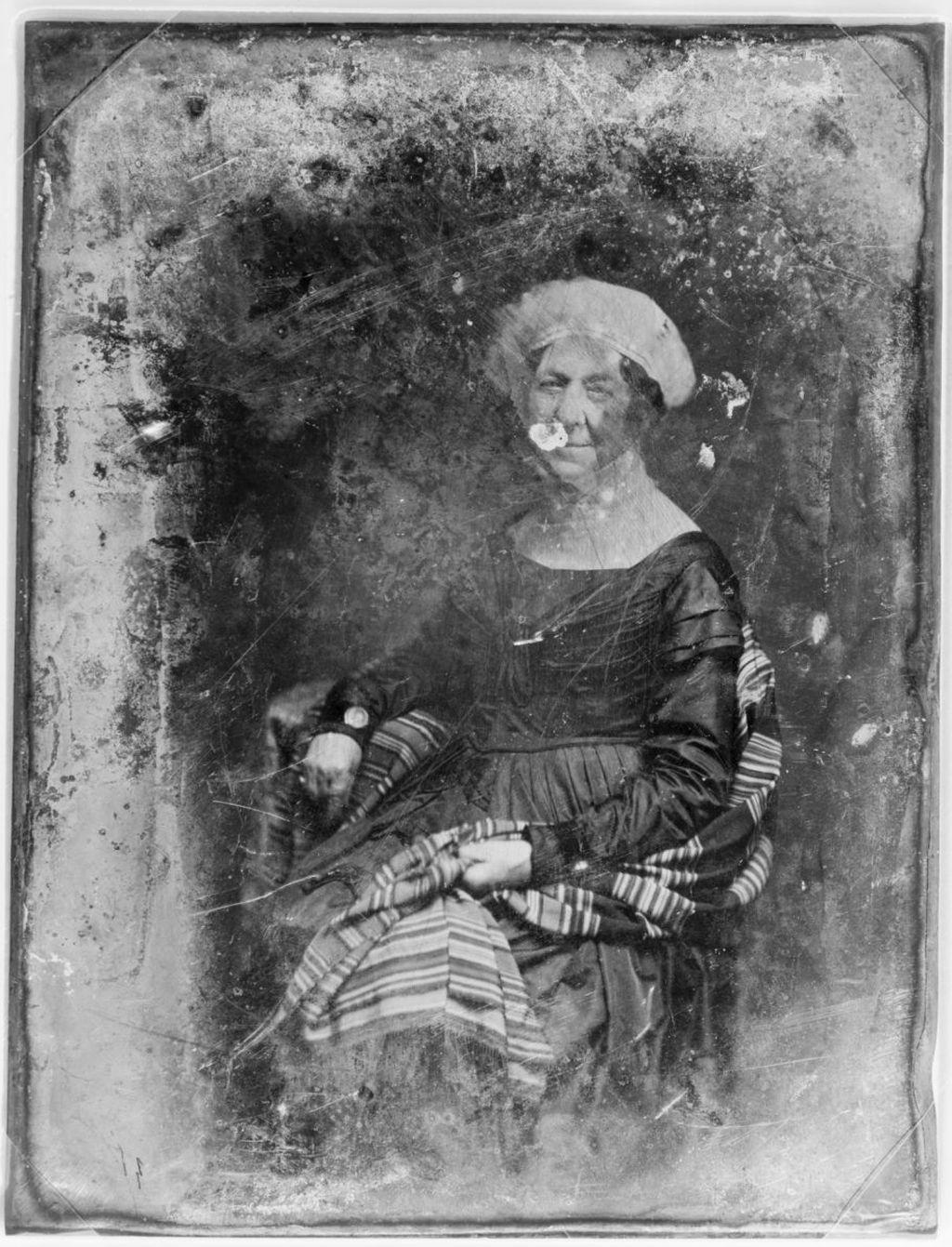Authors:
Historic Era:
Historic Theme:
Subject:
February 1966 | Volume 17, Issue 2


Authors:
Historic Era:
Historic Theme:
Subject:
February 1966 | Volume 17, Issue 2

It was taken near the end of her life, when site was. in the words of a contemporary, “… widowed, poor and without prestige of station [but] the same good-natured, kind-hearted, considerate, stately person, that she had been in the hey-day of her fortunes. Many of her minor habits, formed in early life, continued upon her in old age and poverty. Her manner was urbane, gracious, with an almost imperceptible touch of Quakerism. She continued to the last to wear around her shoulders a magnificent shawl of a green color. She always wore a lofty turban and took snuff.”
Before James Madison died in ]8gO, financial ruin had overtaken him as it had his fellow Virginia planters, Jefferson and Monroc, and his wife inherited a debt ridden estate and the task of publishing his papers, ft was her second widowhood, for she had lost her first husband. John Todd, Jr., and an infant son to yellow fever in 1793. Her only remaining child—a son by Todd—was a spendthrift and gambler, an alcoholic ne’er-do-well for whose sake she sold Madison’s plantation, Montpelier, and mortgaged her own house on Lafayette Square in Washington. As Dolley Madison’s time ran out, life did not seem to hold much for her. But the wise old eyes of the picture still twinkle, and in her eighth decade she was still very close to the center of things in the nation’s capital.
She became a public figure when Jefferson appointed James Madison Secretary of State in 1801. Jefferson was a widower, and his married daughters came to Washington infrequently: Aaron Burr, the Vice President, had also lost his wife; so the wife of the Secretary of State, who was next in line of precedence, became Jefferson’s hostess and social leader of the new capital.
When the Madisons arrived there, it was “ new county,” in Abigail Adams’ words, “surrounded with forest,” and the President’s house (in which the Madisons resided until they could find suitable lodgings) a “great castle” amid the lonely wilderness. But Dolley Madison soon gave the raw capital a standard of manners and